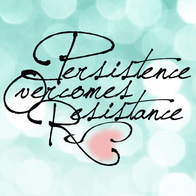
This morning I stopped in to visit with the author of the recently published book, Quick Student Engagement Ideas for Busy Teachers. Because of my background and interest in the study of pedagogics, the author, Russ Johnson, contacted me a couple times along the way simply to bounce ideas around and share interesting insights he encountered as he conducted extensive research to compile the great ideas found in his new book.
In every aspect of life, change requires effort. Part of the beauty of this book is that the ideas shared in it are packaged for simple application, so the effort required to begin to use these ideas is minimal. Yet, there is a depth of application behind these introductions which allows and encourages long-term effort toward growth and change in teaching styles. In case you haven't noticed, nearly all successful consumer-targeted gismos and gadgets are designed this way today - so why not a book too! For example, my smartphone was easy to use when I got it three or four years ago, but I'm still learning new functionality even today. The same is true for dashboards in vehicles, many appliances, software and apps, etc.
Still, willingness is a key first ingredient for change, no matter the ease of adoption. This, I share this warning for those who choose to get the book. In the words of Michael Cross, Assistant Professor at Northern Essex, "Don't bother reading this book if you aren't willing to challenge your method of teaching. But, if you want to engage your students and have a lot of fun in the process, then this is the book for you."
Happy teaching! And, by-the-way, if you are a teacher, trainer or learner, please share a thought or two you've found helpful for livening up the learning process.
In every aspect of life, change requires effort. Part of the beauty of this book is that the ideas shared in it are packaged for simple application, so the effort required to begin to use these ideas is minimal. Yet, there is a depth of application behind these introductions which allows and encourages long-term effort toward growth and change in teaching styles. In case you haven't noticed, nearly all successful consumer-targeted gismos and gadgets are designed this way today - so why not a book too! For example, my smartphone was easy to use when I got it three or four years ago, but I'm still learning new functionality even today. The same is true for dashboards in vehicles, many appliances, software and apps, etc.
Still, willingness is a key first ingredient for change, no matter the ease of adoption. This, I share this warning for those who choose to get the book. In the words of Michael Cross, Assistant Professor at Northern Essex, "Don't bother reading this book if you aren't willing to challenge your method of teaching. But, if you want to engage your students and have a lot of fun in the process, then this is the book for you."
Happy teaching! And, by-the-way, if you are a teacher, trainer or learner, please share a thought or two you've found helpful for livening up the learning process.




 RSS Feed
RSS Feed

